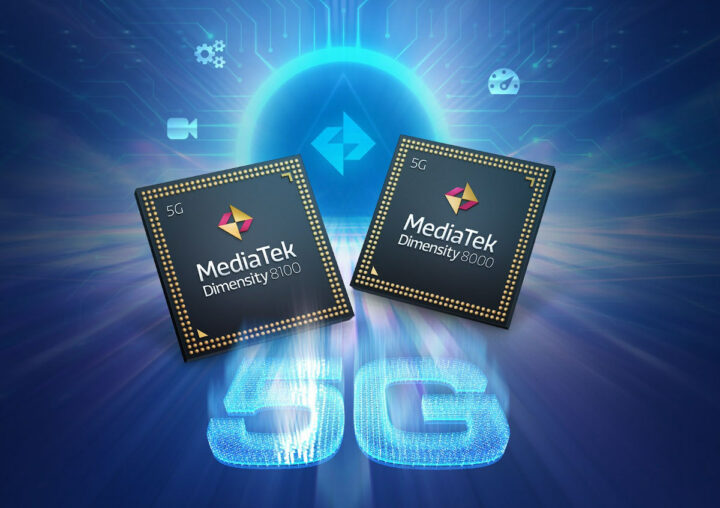MediaTek Dimensity 8000/8100 Arm Cortex-A78 processors for 5G premium smartphones bring many of the features of the flagship Dimensity 9000 Armv9 processor announced last December, but at a more affordable price point.
Designed for gamers, the Dimensity 8100 integrates four Arm Cortex-A78 cores with speeds reaching 2.85GHz instead of 2.75GHz for the Dimenssity 8000, and boosts GPU and AI engine’s frequencies to 20% and 25% respectively.
MediaTek Dimensity 8000/8100 specifications:
- Octa-core CPU subsystem
- 4x Arm Cortex-A78 up to 2.75 GHz (Dimensity 8000) / 2.85 GHz (Dimensity 8100)
- 4x Arm Cortex-A55 up to 2.0 GHz
- 4MB L3 cache
- GPU – Arm Mali-G610 MC6 GPU (Dimensity 8100 with 20% frequency boost) with MediaTek HyperEngine 5.0 gaming technologies
- AI Accelerator – 5th generation MediaTek APU 580 (Dimensity 8100 with 25% frequency boost)
- Memory I/IF – LPDDR5 6400 Mbps
- Storage I/F – UFS 3.1
- Display
- Dimensity 8000 – 168Hz Full HD+
- Dimensity 8100 – 120Hz WQHD+ & 168Hz Full HD+
- Camera – MediaTek Imagiq 780 14-bit ISP for up to 200 MP cameras, 4Kp60 HDR10+ video capture, 2x lossless zoom
- Video
- Decode – 4K H.265/HEVC, H.264, VP9, AV1
- Encode – 4K H.265/HEVC, H.264
- Wireless connectivity
- 3GPP Release-16 5G Smartphone Modem
- 2CC Carrier Aggregation (200MHz) 5G NR
- 4.7Gbps downlink peak performance
- 5G/4G Dual SIM Dual Standby, SA & NSA modes; SA Option2, NSA Option3/3a/3x, NR TDD and FDD bands,
- MediaTek 5G UltraSave 2.0 power-saving enhancement suite
- WiFI 6E 2×2 MIMO
- Bluetooth 5.3, LE audio with dual-link TrueWireless stereo audio
- GNSS – GPS, Beidou, GLONASS, Galileo, QZSS, NavIC
- 3GPP Release-16 5G Smartphone Modem
- Manufacturing process – TSMC N5 5nm-class process
MediaTek also says the new processors use “Dimensity 5G Open Resource Architecture” to give device makers more flexibility to customize and implement differentiating features into 5G smartphones. The company further explains what that means:
There’s nothing very useful on the relevant page on the MediaTek website, which probably means it’s only open to device makers, and it’s not some open-source code or open API that could be adapted by any developers.
The first 5G smartphone based on Dimensity 8000/8100 are expected in Q1 2022, which should mean this month. You may find more information on the product pages or/and the press release.

Jean-Luc started CNX Software in 2010 as a part-time endeavor, before quitting his job as a software engineering manager, and starting to write daily news, and reviews full time later in 2011.
Support CNX Software! Donate via cryptocurrencies, become a Patron on Patreon, or purchase goods on Amazon or Aliexpress





